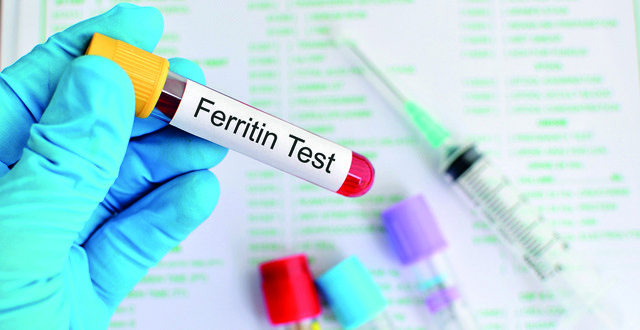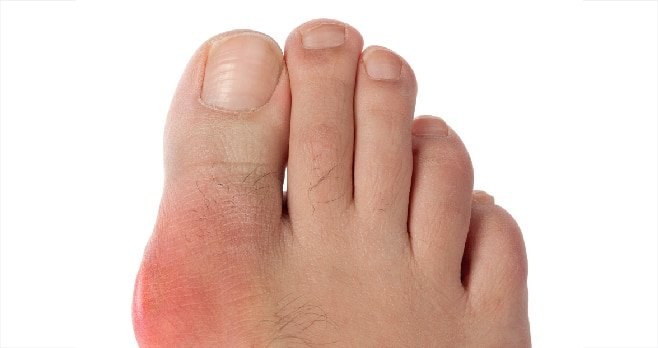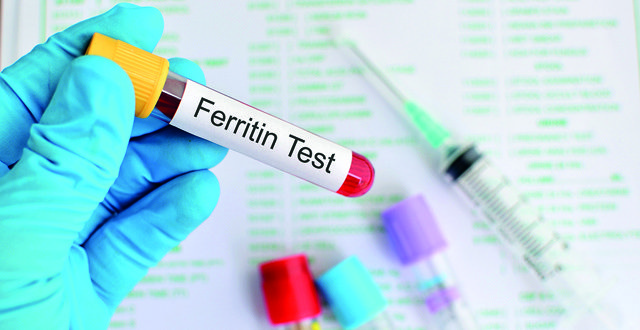Iron deficiency (with or without anaemia) is linked with adverse health outcomes, but especially so in patients with heart failure (HF).
In patients with HF, iron deficiency is frequent but overlooked, with a prevalence of 30-to-50 per cent. Since it contributes to cardiac and peripheral muscle dysfunction, iron deficiency is associated with poorer clinical outcomes and a greater risk of death, independent of haemoglobin level. Therefore, iron deficiency is now recognised as a therapeutic target of chronic HF in addition to chronic renal insufficiency, anaemia and diabetes.
The causes of this comorbidity are multifactorial and complex, and to add to the problem, myocardial iron content is decreased in advanced HF, independently of anaemia. In recent years, a number of studies have shown that correction of iron deficiency through intravenous (IV) iron supplementation in patients with chronic HF may improve functional status and quality-of-life.
The latest European Society of Cardiology <em>Guidelines for the diagnosis and treatment of acute and chronic heart failure</em> (2016) contain specific guidance on the management of iron deficiency in HF and anaemia under its comorbidities section. The guidelines stress the significance of comorbidities more than any previous guidelines have. Iron deficiency is a comorbidity that received very little attention until the last decade, as evidence has accumulated, both for the significance of this comorbidity and the emergence of safe, effective therapies that appear to offer significant benefits to the HF population who suffer with this comorbidity.
The ESC guidelines note that iron deficiency within an HF population is associated with a worse prognosis; mortality rates of people with iron deficiency in chronic HF are significantly higher than those without iron deficiency.
The guidelines highlight the evidence base to date. IV iron has been specifically studied in two randomised, controlled trials in patients with HF and iron deficiency (serum ferritin <100µg/L or ferritin between 100 and 299µg/L and transferrin saturation <20 per cent), both with and without anaemia. Intravenous ferric carboxymaltose (FCM) has been shown to improve self-reported patient global assessment, quality-of-life and NYHA class (over six months) in the FAIR-HF trial, both in anaemic and non-anaemic patients with HF, and in the CONFIRM-HF trial, exercise capacity improved over 24 weeks.
In the analysis of secondary end-points in the CONFIRM-HF trial, IV iron reduced the risk of HF hospitalisations in iron-deficient patients with HF with reduced ejection fraction (HFrEF).
A meta-analysis of IV iron therapy in HFrEF patients with iron deficiency up to 52 weeks showed reduced hospitalisation rates and improved HF symptoms, exercise capacity and quality of life. Treatment with FCM may therefore result in sustainable improvement in functional capacity, symptoms and quality-of-life, said the ESC. Treatment was also associated with a significant reduction in hospitalisations for worsening HF. The number of deaths and the incidence of adverse events were similar. Neither IV iron trial was powered to test for an effect on major outcomes or to evaluate separately the effects in anaemic and non-anaemic patients. The effect of treating iron deficiency in HFpEF/HFmrEF and the long-term safety of iron therapy in either HFrEF, HFmrEF or HFpEF is unknown. The safety of IV iron is unknown in patients with HF and haemoglobin >15g/dL.
Patients with iron deficiency need to be screened for any potentially treatable/reversible causes (eg, gastrointestinal sources of bleeding), the ESC guidelines state.
Anaemia (defined as a haemoglobin concentration <13.0g/dL in men and <12.0g/dL in women) is common in HF, particularly in hospitalised patients. It is more common in women, the elderly and in patients with renal impairment and is associated with advanced myocardial remodelling, inflammation and volume overload. Anaemia is associated with advanced symptoms, worse functional status, greater risk of HF hospitalisation and reduced survival. A diagnostic work-up to seek a cause for any finding of anaemia is indicated (eg, occult blood loss, iron deficiency, B12/folate deficiency, blood dyscrasias), although in many patients, no specific cause is found. The erythropoietin-stimulating agent darbepoetin alfa did not improve clinical outcomes in HFrEF patients with mild-to-moderate anaemia, but led to an excess of thromboembolic events and is therefore not recommended.
See <em><strong>www.escardio.org</strong></em> for more information.
<div style=”background: #e8edf0; padding: 10px 15px; margin-bottom: 15px;”> <p class=”subheadMIstyles”><strong>Recognising and managing iron deficiency</strong>
<div> <p class=”BylineMIstyles”>MS Donna Cosgrove PhD MPSI highlights the best treatment approaches for iron deficiency and the key tell-tale symptoms
</div>
The World Health Organisation (WHO) defines anaemia as a haemoglobin (Hb) concentration below:
<p class=”listBULLETLISTTEXTMIstyles”>13g/dl in men over 15 years of age.
<p class=”listBULLETLISTTEXTMIstyles”>12g/dl in non-pregnant women over 15 years of age.
<p class=”listBULLETLISTTEXTMIstyles”>11g/dl in pregnant women.
The lower the Hb level, the more likely there is to be serious underlying pathology and the more urgent the need for investigation. The normal range for Hb can also vary between different populations, so the lower limit of the normal range for the laboratory performing the test may be used to define anaemia.
Challenges in the treatment of iron deficiency include: 1) Finding and addressing the underlying cause; and 2) the selection of an iron replacement product that meets the needs of the patient.
Symptoms of iron deficiency include tiredness or lack of energy, shortness of breath, heart palpitations, and pale skin. A soreness or cracking of the tongue and the sides of the mouth are found in some types of the disease. Traditionally, pallor of the inner surface of the eyelid, or the underside of the tongue, indicated iron deficiency. However, this is not reliable. A blood test can confirm diagnosis.
<p class=”subheadMIstyles”><strong>Treatment</strong>
After attending to any discovered underlying cause, the aim of treatment should be to restore Hb concentrations and red cell indices to normal, and replenish iron stores. Treatment of an underlying cause should prevent further iron loss, but all patients should have iron supplementation, both to correct anaemia and to replenish body stores. Individuals with low iron levels should decrease their intake of tea and coffee, along with dairy products, because this can inhibit the amount of iron that can be absorbed.
<p class=”subheadMIstyles”><strong>Oral iron supplementation</strong>
Oral iron avoids the need for venous access and infusion monitoring and eliminates the risk of infusion reactions. It is time-consuming and requires months of treatment, however. There is a slow return to normal levels of Hb. Once anaemia is corrected, oral iron supplementation should be continued for at least three months to replenish iron stores.
There is no evidence that one iron salt formulation is more effective than another. As they are poorly absorbed, the use of enteric-coated formulations should be avoided. Oral iron is usually prescribed at a high dose (100-200mg elemental iron) to be taken one-to-three times a day. Up to 70 per cent of patients on oral iron report gastrointestinal side-effects, such as epigastric discomfort, nausea, diarrhoea and constipation, due to exposure to unabsorbed iron, which reduces tolerance and adherence to treatment. However, some iron compounds (eg, ferrous gluconate) or formulations (iron suspensions) may also be better tolerated than others, eg, ferrous sulphate or ferrous fumarate.
Failing this, lower-dosage iron supplements can also be effective for treating iron deficiency, and are associated with fewer gastrointestinal side-effects. A number of commonly-used medications (tetracycline, antacids, proton pump inhibitors, H2 antagonists, etc) reduce the absorption of iron salts, so oral iron should be taken 12 hours apart from these drugs. The intake of iron salts together with food also reduces absorption of iron by about 40 per cent, but increases the tolerance. Ascorbic acid (250-500mg twice daily with the iron preparation) may enhance iron absorption, but there is no data for its effectiveness in the treatment of iron deficiency anaemia.
An increase in Hb of 1g per dL after one month of treatment shows an adequate response to treatment and confirms the diagnosis. Once normal, the Hb concentration and red cell indices should ideally be monitored at intervals, eg, three-monthly for one year.
<p class=”subheadMIstyles”><strong>Parenteral iron supplementation</strong>
For those intolerant or not responding to oral iron, there are three parenteral preparations available, two of which can only be administered intravenously (iron sucrose and ferric carboxymaltose), and one that can be given either intravenously or by deep gluteal intramuscular injection (iron (III) hydroxide dextran), although this can be painful and requires several injections.
For patients with severe iron deficiency anaemia, administration of IV iron is the replacement therapy of choice. The haematological response to IV iron should be assessed, and the need for further iron supplementation established, six-to-eight weeks after initial iron repletion.
Parenteral therapy may be used in patients who cannot tolerate or absorb oral preparations, such as those who have undergone gastrectomy, gastrojejunostomy, bariatric surgery, or other small bowel surgeries. The most common indications for IV therapy include GI effects, worsening symptoms of inflammatory bowel disease, unresolved bleeding, renal failure-induced anaemia treated with erythropoietin, and insufficient absorption in patients with coeliac disease.
<p class=”subheadMIstyles”><strong>Iron deficiency in heart failure</strong>
HF patients are more susceptible to iron deficiency — up to half of patients with HF are deficient. The causes of this are multifactorial and complex, and to add to the problem, myocardial iron content is decreased in advanced HF, independently of anaemia. In recent years, a number of studies have shown that correction of iron deficiency through IV iron supplementation in patients with chronic HF may improve functional status and quality-of-life. Mortality rates of people with iron deficiency in chronic HF are significantly higher than those without iron deficiency.
Among patients with HF, evidence for the efficacy of oral iron is mixed. Compared with oral iron, the use of IV iron therapy in patients with HF has been more thoroughly investigated. The Ferinject Assessment IRon deficiency and chronic Heart Failure (FAIR-HF) trial was conducted to determine whether IV FCM for iron deficiency could improve symptoms of chronic HF, quality-of-life and exercise capacity in non-anaemic patients. Results demonstrated that ferric carboxymaltose (Ferinject) treatment of patients with HF and iron deficiency resulted in significant improvement in disease symptoms and quality-of-life.
</div>










Leave a Reply
You must be logged in to post a comment.